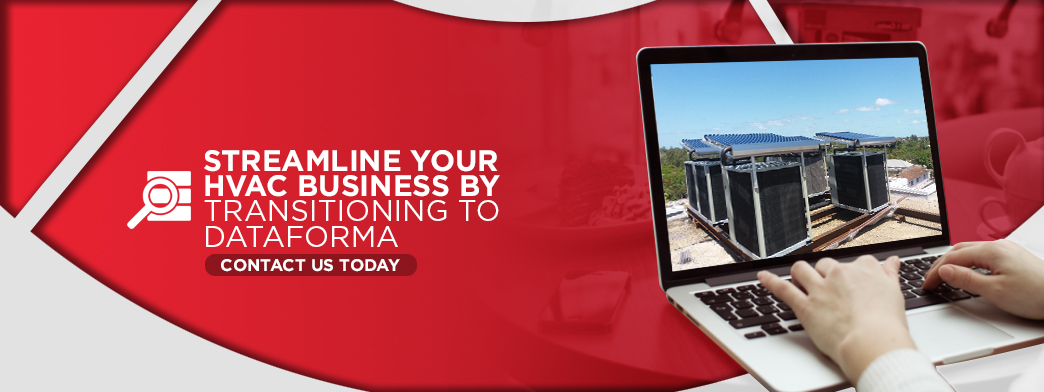
From skilled labor shortages to high overhead, HVAC companies today face many serious challenges. In this article, we’ll discuss the most important problems facing the HVAC industry and how companies can overcome them — the solution is simpler than you might think.
HVAC Industry Challenges in 2019

To run a successful HVAC company these days, owners must overcome a variety of difficulties. Some of these challenges are new, whereas others are as old as the industry itself.
1. Stiff Competition
There’s no shortage of HVAC service providers out there. While this is beneficial for consumers who need their services, this can be challenging for HVAC companies trying to find their niche. According to research conducted by IBISWorld, no company has a dominant market share in this industry, and the largest company accounts for just 5 percent of the industry’s revenue. Most of these companies are rather small, have only a handful of employees and only focus on certain areas of HVAC systems.
Because of this intense competition, some HVAC companies may feel tempted to offer lower prices to attract customers, but this is not generally a wise strategy in the long term. We recommend that you instead differentiate your business by providing exceptional service, no matter what your business specializes in. This way, you can increase the number of loyal, long-term customers who can recommend your business to others.
2. Seasonality
The HVAC industry experiences significant fluctuations in business throughout the year. When the weather’s freezing or sweltering and HVAC systems are failing, customers are calling non-stop. But when the weather is temperate, customer calls are less frequent, which forces HVAC businesses to find other services to provide to customers during slower seasons.
3. Skilled Labor Shortage
The HVAC industry, like many other industries, suffers from a lack of skilled labor. Some believe this is due to our society’s emphasis on acquiring four-year degrees over learning trades, while others speculate that fewer are pursuing trades because they can rely on government assistance instead. But regardless of the reasons, this shortage is only going to worsen because there are not enough young people pursuing trades to replace the older tradespeople who are leaving the workforce.
However, many contractors have found ways to deal with this shortage — some have been able to attract potential employees by making their company appealing to work for, while others have managed to grow their workforce through a variety of training programs.
Another way some companies have dealt with the issue is by focusing on employee retention. For instance, they may help their employees with money management or offer greater pay for working harder.
4. High Costs
Starting an HVAC business is no small investment, with initial costs ranging from $2,000 to $10,000 — and keeping the business running requires continuous capital. The costs include:
- Skilled technicians
- Vehicles
- Special equipment
- Insurance
- Marketing
HVAC Trends 2019

It is well known that HVAC systems are one of the largest energy consumers in homes and commercial facilities. For this reason, HVAC industry trends are moving toward more environmentally friendly HVAC systems that consume less energy. The newest systems are making use of renewable energy sources and enhanced technologies.
Here are some of the top trends in the HVAC industry:
1. Smart HVAC
The growth of the Internet of Things (IoT) has allowed us to control, monitor and interact with our systems and appliances like never before, and HVAC systems are starting to incorporate this technology. These technologically advanced HVAC systems will include the following technologies, which are designed to improve efficiency and save money:
- Repair notifications: These systems will let you know when repairs or routine maintenance are needed, and it can even schedule an appointment by itself.
- Remote access: HVAC systems will have remote capabilities.
- Self-regulation: New HVAC systems will feature new sensors in the compressor, thermostats and other places, which will help the system regulate itself and determine when and where in the building it is most needed.
2. Sustainable Building Design
When new buildings are designed, sustainability is a primary consideration. This movement is often called sustainable building design, green construction or green building design. HVAC systems are a primary component in green building design, as they are one of a building’s primary energy consumers.
The sustainable design movement has led to several advancements in the HVAC industry, including:
- Ventilation systems: Architects are trying to make more use of natural airflow to lower the energy consumption of the facility.
- Different materials: Architects are also considering new building materials that will help to maintain a more consistent temperature in the building, which will make a high-powered HVAC system less necessary.
- Alternative energy: The HVAC systems found in sustainable buildings will likely use alternative power sources.
3. DeVAP HVAC
DeVAP, which is short for “Desiccant Enhanced Evaporative,” is also changing the HVAC industry. Desiccants refer to substances that absorb water from the surrounding area. These systems provide cooling by using an evaporative cooling system. In this system, water is poured onto a honeycomb media, which absorbs it like a sponge. Then, a fan blows this water through the media, causing it to evaporate. This evaporation then causes the surrounding air to cool down, and this air is then released into your cooling system.
As the desiccants used in DeVAP systems also remove humidity from the surrounding air, they provide the same dry, cool air offered by traditional air conditioners. However, DeVAP systems consume considerably less energy and contain no harmful refrigerants.
4. Solar HVAC
Solar HVAC systems use solar panels to absorb the sun’s light energy and heat, or thermal energy. You can have them installed in a new building or refitted for existing construction.
Heating applications use the thermal energy to heat up a fluid, which typically consists of antifreeze and water. This fluid is then run through a heat exchanger to create heat that warms up the building.
Buildings with existing AC systems can be refitted to run on solar power, which means solar power can be used to produce the electricity required to run the AC system. A newer AC system might instead use a solar cooling system, which uses evaporative cooling, where the evaporation of water in the system will cool the surrounding air.
5. Geothermal HVAC
Geothermal HVAC systems feature an earth loop, which refers to a system of underground pipes. While the air temperature above ground rises and falls throughout the year, the temperature of the ground stays more consistent, as long as you’re down at least six feet. Geothermal cooling and heating systems make use of this temperature consistency to cool and heat buildings. Water runs through these underground tubes, and depending on what time of year it is, these tubes are either heated or cooled by the temperature of the ground. This water then travels to an indoor unit, where a fan, pump and compressor are used to deliver temperate air to other parts of the house or building.
How Can HVAC Business Owners Solve the Most Common Problems?

Many of the challenges listed above can be solved by doing one simple thing — developing an online business strategy.
In fact, one of the reasons many HVAC companies suffer from these issues is a result of another issue — complacency. While some HVAC companies find solutions to challenges by moving their business online and taking advantage of the cutting-edge software tools available, others are very resistant to making this transition. This resistance to change could be considered the HVAC industry’s biggest problem of all.
Generally speaking, the HVAC supply chain has been very slow to move their businesses online. They often act like most other businesses did 15 years ago — conducting their business on phones with cords, paper documents, and no computers. But market conditions are changing, and adopting an online strategy will be essential for the future success of any HVAC company.
How Software Helps With the HVAC Industry
Here’s how an online strategy can help you overcome the four challenges mentioned above:
- Stay competitive: HVAC companies can remain competitive by developing a meaningful online presence and using online marketing tools to advertise their business effectively.
- Attract employees: HVAC companies don’t just need to make their business attractive to potential customers — they also need to attract potential employees. Even if there is a shortage of workers, HVAC companies that market themselves well online will have a better chance of attracting young, new employees.
- Attract business during seasonal slowdowns: An HVAC company’s online strategy can include sending customers deals and offers that can provide during less busy times of the year.
- Reduce costs and busywork: Running an HVAC company involves paying a high overhead and managing many tasks. By using a web-based management service such as Dataforma, however, HVAC companies can easily manage — and in some cases, completely automate — a variety of processes.

How Can Dataforma Help Solve These Problems?
We believe no one service can help HVAC businesses overcome the common challenges in their industry as well as Dataforma, a software that provides field service management and support. With Dataforma, you’ll be able to access and manage everything related to your business, including bid requests, marketing, team schedules and much more. Dataforma also provides all the necessary tools to run your business more effectively and provide your clients with the information they need.
Below are some of the useful features that our services include:
- Service work management: The service work management service allows you to create service tickets while talking to the representative of the building, easily capturing important information including the reported by contact and work description. And as all work orders are saved permanently, you’ll never have to worry about losing one. There is also a message board that shows the number of your reports and their status.
- GPS tracking: This feature provides you with real-time data on the location of your representatives and technicians. It will allow you to compare the actual hours with those documented by your employees to see if there is any serious discrepancy. When searching for projects, you can easily filter by user, location or hours on site.
- Service or work order calendar: This feature allows you to manage work orders and dispatch them to service crews. You can filter work orders needing to be scheduled by work type or building location for logical, fast scheduling. Each work order is color-coded by the crew or foreperson doing the job, and the color of the font indicates whether the job has been finished or not.
- Building work history: With the building work history feature, you can instantly access all of the production projects and work orders from the past. You can also see all the warranties that are current or have expired. You have access to all drawings, photos and any other documents related to the building here. This feature also allows you to record owner contacts, property management contacts and other valuable building relationships.
- Invoicing: Dataforma also offers a feature that allows you to easily and quickly create invoices from the Project or Work Order. These invoices automatically import information from the Work Orders to make this process even faster. You can also manage overdue invoices, track collection efforts and share accounts receivable info with your office staff without letting them access Accounting.
- Document management: You can upload any document you want into Dataforma. The documents are stored in an appropriate folder — such as Project, Work Order or Building — so that you can easily retrieve it in the future from any place that has an internet connection. There is also a feature that allows you to resize large photos so that they can be quickly uploaded and occupy less space.
- Lead tracking: With the lead tracking feature, you can quickly make, view and print out a new lead. The leads can be easily organized by work type, salesperson and more, and you can run sales meetings from the system directly. This feature will also provide reports, which you can analyze to figure out where to spend your marketing dollars in the future.
- Bid tracking: With Dataforma, only takes a few seconds to make a bid from a lead. There is a bid calendar, which shows you all of the company’s bids, which are conveniently color-coded by the salesperson. Like with other Dataforma features, you can organize and filter bids by work type, salesperson and more.
- Generate and manage proposals: You can also use Dataforma to generate proposals, and you can completely customize the format to match your current one.
- Project and contract management: With Dataforma, it is easy to update a project’s status — Lead, Pending, Approved or Completed — at any time.
Streamline Your HVAC Business by Transitioning to Dataforma
Dataforma is a comprehensive, all-in-one solution that provides scheduling, mobile inspections, GPS tracking and CRM in a single system.
Every day you put off transitioning your HVAC business to Dataforma, you’re wasting time and expensive resources. Let Dataforma help your business go entirely paperless.
Our services were developed by contractors like you, which means that we understand the issues faced by your business. We also listen directly to feedback from our users and are continually improving our services, so you can rest assured that you’re using the most up-to-date technology that can meet the latest demands of the industry.
Learn more about how Dataforma can provide the best field service management for your HVAC business, then schedule your free demo today.










